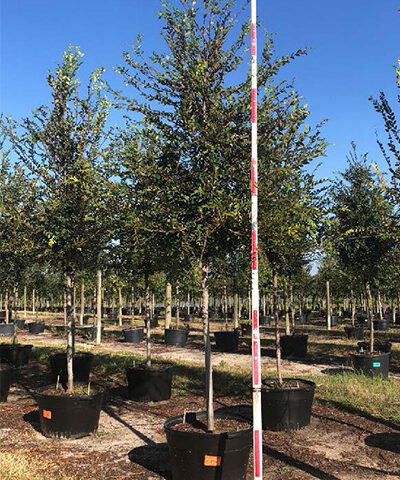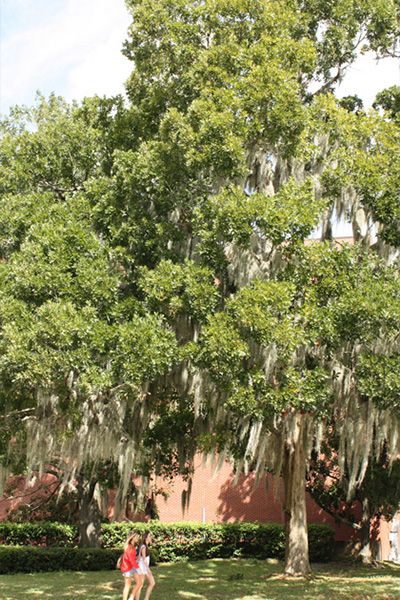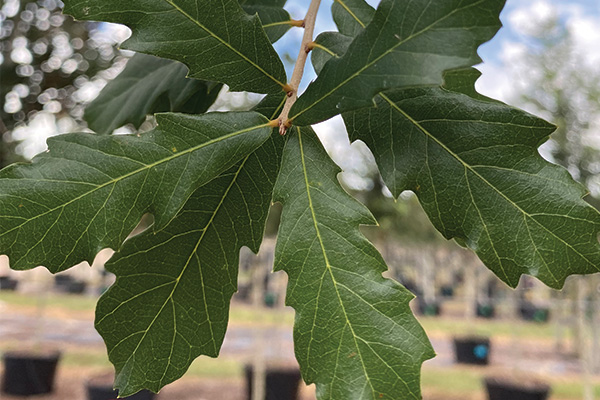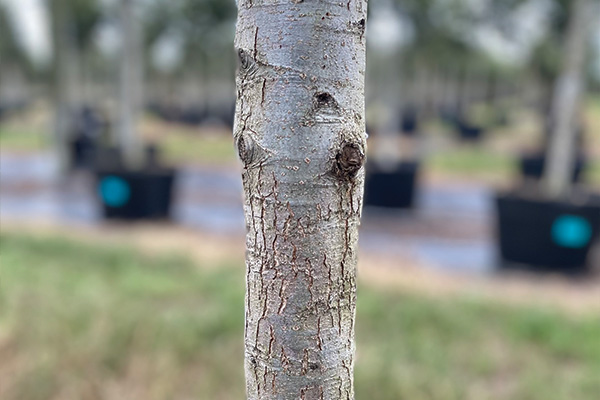Oak Bluff

Quercus austrina
The Quercus austrina, commonly referred to as the Bluff Oak due to its most
common found locations on river bluffs, slopes, and streams, is rare to see in
nature. They are mostly found in the north half of Florida (north of Lake County),
but can also be found along the southeastern United States. They prefer to live in wet habitats and can tolerate clay, sand, loam, acidic and well-draining soils.
The Bluff Oak has medium-textured leaves that make it stand out from other oaks.
It is small for an oak tree, as its average height is 45 to 60 feet, with only a width
of 35 to 50 feet. This deciduous tree’s fall colors are beautiful and showy, varying
in colors like orange, yellow, and copper. Bluff Oaks have good drought tolerance
and should be grown in full sun. Since the leaves do fall in the winter, some may
say that this tree can be messy with leaf drop. Come springtime, the tree will flower
and attract all types of wildlife such as small mammals, pollinators, and butterflies.
This tree mostly grows in the upright direction and does not have a tendency to
droop. With a bit of occasional pruning, this tree can develop a strong structure
resistant to breakage and high winds. It is a great option for urban landscapes
because of its tolerance to both drought and wet soil and is well suited for
planting in parking lots or along streets where there is plenty of space for crown
development. Due to its moderately small size, it is ideal for landscapes that would
benefit from a shade canopy, but may be limited in horizontal space.

Ornamental Characteristics:
Native Origin:
Southeast North
America
Common Names:
Bluff Oak
Description:
Hardy Range: 8A to 9B
Mature Height: 40 – 60’
Mature Spread: 35 – 50’
Breakage: resistant
Shade: provides ample shade
Ornamental Characteristics:
Bluff Oak leaves are between 4 to 8 inches long and 2 to 4 inches wide. They can vary in color from green to gray-green, with hairs on mature leaves. Some leaves are symmetrical whereas others are not. Its acorns are also peculiar in shape, nearly fully enclosed in their cupule, and loved by wildlife. The bark of this tree is pale or cream-colored, forming vertical ridges
as it grows.
Environment:
Soil: clay, loam, sand, acidic and well-draining soil
Exposure: full sun



